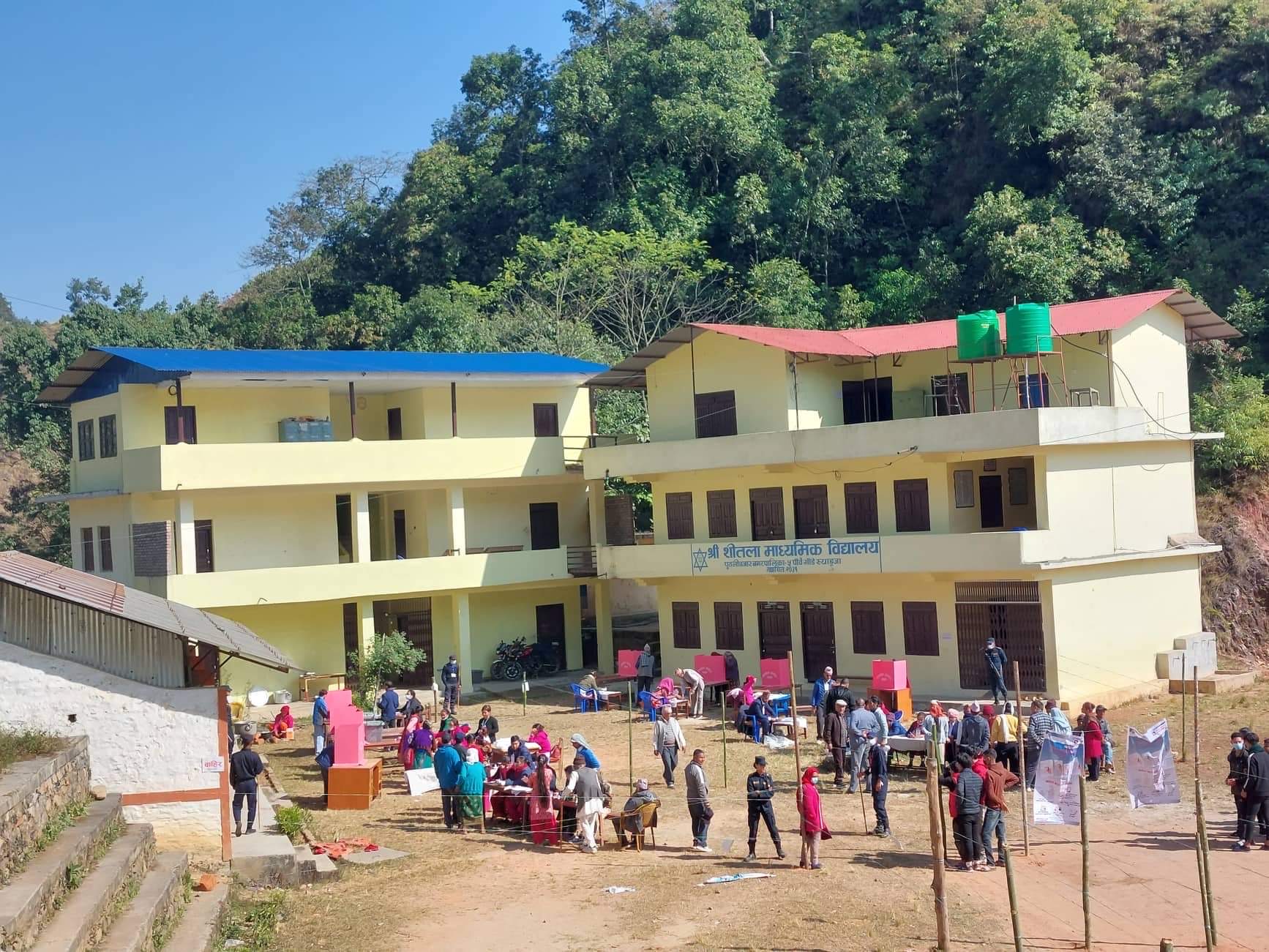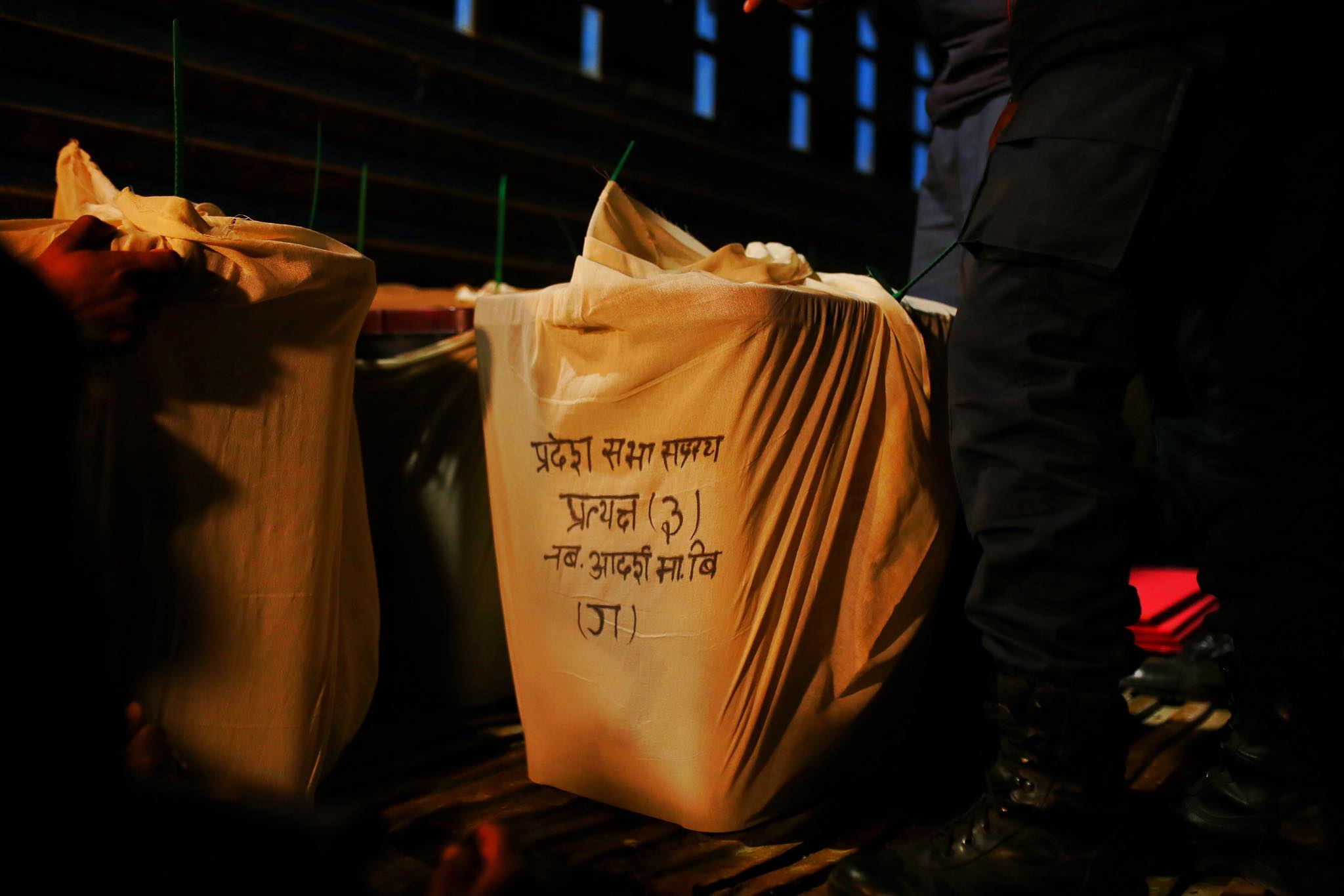Lower than usual turnout in Nepal polls

A lower than usual turnout in Sunday’s elections in Nepal signals voter apathy, and could favour non-establishment parties.
An Election Official official said he expected the turnout to be about 61% of the nearly 18 million eligible voters. This is lower than the 66% in local polls in May and 68% in the last federal elections in 2017.
“We had expected 70% turnout, and although we have not got all the results yet, our preliminary estimate is that only 60% of those in the voter lists cast their ballots,” Ram Prasad Bhandari of the Election Commission told Nepali Times.








A lower than usual turnout would favour the National Independent Party, independent candidates and those who ran for elections as rebel candidates after not getting tickets from their own parties.
Experts we spoke to cited various possible reasons for the lower turnout: fewer young males in the country because of outmigration, the requirement that voters have to go to their home districts to vote, apathy towards coalition parties, and the lack of agenda of the established parties.
“Voters seem to have thought that these are the same old parties,” says Nilambar Acharya, analyst and former ambassador to India. “Committed voters will cast their ballots anyway, but many others might have felt voting will not make a difference.”





While the independent candidates are expected to have a strong showing in urban centres and along highway towns, the ruling coalition and opposition UML are still expected to do well in rural areas.
Political analyst Indra Adhikari who voted in Nuwakot district, said depopulation meant mostly elderly and children are left and this could be the main reason for low turnout.
She added: “The other reason was the confusion about the ruling coalition. Many voters were asking why they should vote for the Maoists, who were responsible for killing my relatives in the war.”




The 5-party ruling coalition is made up of the Nepali Congress (NC) and the Maoists among others, and they were enemies during the ten-year insurgency in which 17,000 Nepalis were killed.
Confusion created by the coalition candidates also appears to be the reason behind violation and suspension of voting in certain centres across the country.
In the most violent incident in Triveni Municipality of Bajura district in the far-west, one 25-year-old was killed and several severely injured when police had to fire on a crowd attacking the polling station when it was about to be closed. The injured were airlifted to Surkhet by a Nepal Army helicopter.
Elsewhere in Tama Kosi Municipality of Dolakha, police opened fire to control a dispute between cadre from the governing coalition and the opposing UML. According to DIG Kiran Bajracharya, the police fired 15 rounds to ensure safety of the polling station and the voters when locals pelted stones at them. One policeman was injured.
Similarly, in Siraha’s Karjanha-6, the police fired three rounds after a cadre of JSP Unified Socialists both made a go to capture the ballot boxes. Also in Rautahat, the police had to open fire at a polling station.





Several polling stations saw voting disrupted with at least 44 voting centres out of more than 22,000 affected. By 3:30PM, voting in 15 centres had to be stopped.
However, the Elections Commission says voting in most places was peaceful and orderly. Chief Election Commissioner Dinesh Thapalia said ballot counting would start Sunday night itself with results for First Past The Post candidates expected to come in a week by 27 November.
Complete election result, however, is expected to come in only in two weeks which once again showed the need for electoral reform including a quicker, more reliable counting system.
Nepalis across the country were already lining up in the morning to cast their votes with a total of 11,543 candidates fielding for 825 seats, 275 parliament and 550 provincial assemblies.




